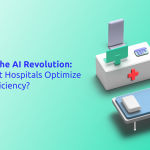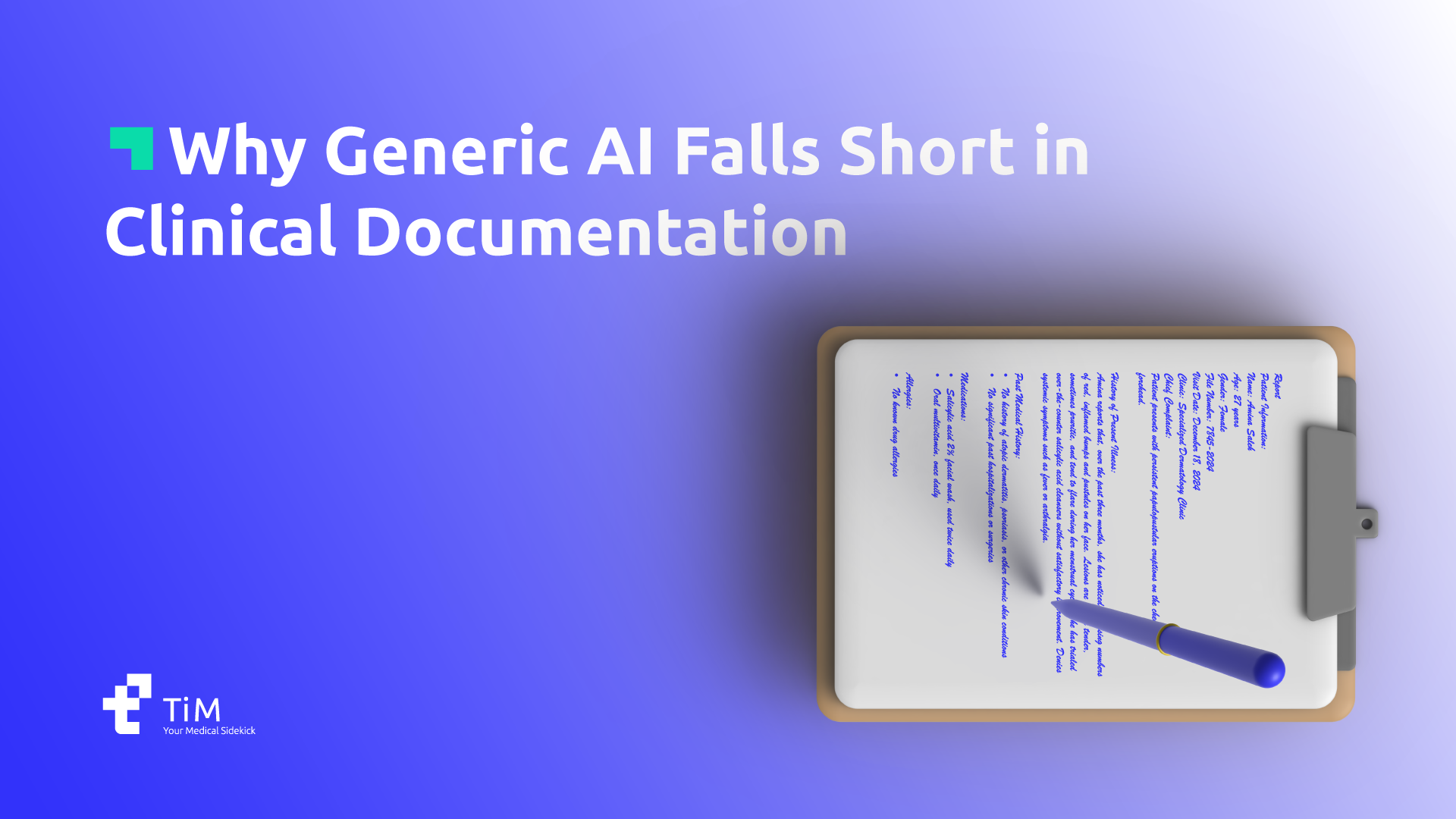
How Leading Hospitals Are Using AI to Boost Efficiency and Patient Care
October 21, 2025
Why Generic AI Falls Short in Clinical Documentation
Artificial intelligence is rapidly transforming healthcare — but not every AI solution is built equally. Tools like ChatGPT, Gemini, and Claude have revolutionized how we write, search, and communicate. Yet, when it comes to clinical documentation, these general-purpose models fall short.
Healthcare demands precision, privacy, and real-time understanding — qualities that generic AI systems simply weren’t designed for. That’s where healthcare-specific AI scribes redefine the game.
Below is a breakdown of why purpose-built medical AI makes all the difference.
1. Purpose-Built vs. General-Purpose Technology
- Generic AIs are designed for open-ended conversation and general productivity. They can write essays or answer questions, but they have no native understanding of medical workflows or terminologies.
- They require constant manual input — typing or dictating each note — and cannot integrate into clinical environments or automatically structure information.
- Healthcare AI scribes, by contrast, are built from the ground up for clinical use. They listen passively during patient consultations, recognize medical context, and automatically generate structured clinical notes that follow professional formats such as SOAP, HPI, and ROS.
- In short: generic AIs react, while healthcare scribes act — working alongside the physician rather than waiting for input.
2. Workflow Integration & Real-World Efficiency
- Generic AIs operate as standalone tools. To use them, physicians must stop interacting with the patient, recall details, and type instructions manually.
- This constant context switching disrupts clinical flow and adds extra work after the consultation ends.
- Healthcare AI scribes, however, capture conversations in real time — automatically identifying symptoms, diagnoses, and treatment plans.
- When the session ends, the documentation is already ready for review.
- For a busy physician seeing 20 patients daily, this means saving 3–5 hours per day, time that can instead be spent with patients or family.
3. Data Privacy, Security & Compliance
- Generic AIs are built for the public. Their privacy terms are not designed for Protected Health Information (PHI), and their servers may store data for training or analytics.
- This raises serious HIPAA and GDPR compliance risks, as well as potential breaches of patient trust.
- Healthcare AI scribes are compliance-first systems, offering end-to-end encryption, Business Associate Agreements (BAA), private or on-premise hosting, and full audit trails.
- They never use patient data for model training.
- The result: total control, transparency, and peace of mind for healthcare organizations.
4. Medical Accuracy & Contextual Understanding
- Generic AIs rely on broad language knowledge and may “hallucinate” facts. They cannot reliably distinguish between clinical details and casual conversation.
- Healthcare AI scribes are trained on millions of verified medical interactions, enabling them to interpret complex terms, detect context, and separate relevant information from noise.
- They follow standardized documentation logic — capturing subjective and objective findings, assessments, and plans — so every note aligns with medical expectations.
- Physicians report needing far fewer edits, resulting in accurate, structured, and legally sound records every time.
5. Time Savings & Productivity Gains
- With generic tools, physicians still perform the mental work of summarizing, structuring, and entering details. The time saved rarely exceeds 10–20%.
- Healthcare scribes, however, eliminate typing altogether. They reduce documentation time by 60–75%, instantly producing clean notes ready for the EHR.
- Over a week, that equals 15–25 hours regained — valuable time that reduces burnout and enhances patient throughput.
6. Patient Engagement & Quality of Care
- Typing during consultations breaks connection. Patients often feel unseen when doctors focus on screens.
- By contrast, with AI scribes handling the notes, physicians can maintain full eye contact and build genuine rapport.
- Studies show that patients rate visits higher when doctors aren’t distracted by documentation tasks.
- Better focus means better understanding, more trust, and higher satisfaction — outcomes that directly translate into stronger patient loyalty and improved care quality.
7. Ease of Use & Adoption
- Generic AIs require “prompt engineering” skills and yield inconsistent results based on phrasing.
- Healthcare scribes are intuitive by design: preconfigured medical templates, automatic formatting, and standardized note styles make them usable from day one.
- Hospitals and clinics can deploy them organization-wide with minimal training, ensuring consistency across all providers.
8. ROI and Cost Efficiency
- Generic AIs appear cheap — $20–$30 per month — but come with hidden costs: time loss, compliance risk, and incomplete documentation.
- Healthcare AI scribes, usually $50–$200 monthly, save thousands of dollars in physician time and eliminate the need for human scribes who cost $30,000–$50,000 annually.
- Average return on investment reaches 3,000–7,000%, purely from time savings and improved efficiency.
9. Scalability & System Integration
- Generic tools are built for individuals, not institutions. They lack centralized control, user management, or integration with hospital systems.
- Healthcare AI scribes are enterprise-ready — offering EHR integration, role-based permissions, compliance dashboards, and analytics on usage and performance.
- Whether for a small clinic or a 5,000-physician hospital, the technology scales smoothly and securely.
10. Specialty-Specific Intelligence
- General AIs treat all text equally; they can’t adapt to cardiology vs. pediatrics vs. psychiatry.
- Healthcare scribes come with specialty-trained models and templates, generating documentation that reflects the tone, terminology, and workflow of each discipline.
- Every note feels authentic and clinically precise — not generic prose dressed as medicine.
The Bottom Line
Generic AI models are extraordinary for general tasks — but clinical documentation isn’t a general task. It’s sensitive, structured, and mission-critical.
Using generic AI for patient records is like using a pocket calculator to run a hospital system: it works, but it’s the wrong tool.
Healthcare-specific AI scribes are purpose-built for medicine — compliant, context-aware, efficient, and scalable. They let physicians spend less time typing and more time healing.
Save Time. Improve Care. Protect Data.
That’s the difference between generic AI — and intelligent healthcare.

